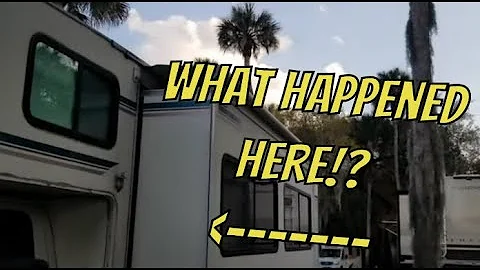Master the Art of Car Brake and Fuel Line Bending
Table of Contents
- Introduction
- The Tool for the Job: Hardline Bender
- Choosing the Correct Size
- Preparing the Line for Bending
- Using a Template for Precision
- Starting the Bending Process
- Ensuring Proper Alignment
- Dealing with Multiple Bends
- Tips for a Successful Bend
- Conclusion
Introduction
In this article, we will walk you through the process of bending brake or fuel lines in your classic car. Bending these lines correctly is crucial for their proper installation and functionality. We will discuss the necessary tools, techniques, and precautions to ensure successful bending results. Whether you are matching an existing line or creating a custom one, this guide will provide you with the knowledge to complete the job effectively.
The Tool for the Job: Hardline Bender
To bend brake or fuel lines accurately, you will need a hardline bender. This tool consists of two arms, with the longer arm providing leverage. It also features degree marks to indicate the angle of each bend. Using a hardline bender ensures precision and consistency throughout the bending process.
Choosing the Correct Size
Before starting, it is essential to determine the correct size of the brake or fuel line for your project. The bender should accommodate the line's size, usually ranging from a quarter inch to three eighths of an inch. It is important to select the appropriate size that matches both your project requirements and the bender's capabilities.
Preparing the Line for Bending
Before bending the line, ensure that it is properly flared and has the necessary fittings attached. If the bends are too close to the ends, it may be challenging to fit the line into the flaring tool. Therefore, it is advisable to complete the flaring process before bending.
Using a Template for Precision
To ensure accurate bends and proper alignment, it is helpful to use a template. You can create a template by bending a scrap piece of tubing or using a bendable wire, such as a coat hanger. The template will help determine the appropriate length and placement of the bends, resulting in a clean and well-fitted line.
Starting the Bending Process
Begin by holding the lines up next to each other and marking the starting point of the bend on the hardline. This mark should align with the zero-degree mark on the bender. To initiate the bend, smoothly and continuously move through the entire bend without starting or stopping. It is crucial to maintain a consistent motion to achieve a seamless bend.
Ensuring Proper Alignment
When dealing with multiple bends, it is essential to align the lines correctly. Holding the lines together and next to each other, mark the location of the next bend. This mark should always point to the side of the bender that will be used. By following this method, you can ensure that all bends are performed in the correct direction.
Dealing with Multiple Bends
Multiple bends can present challenges, especially when working on brake hardlines that run the length of the chassis. To tackle this complexity, it is crucial to work methodically and ensure that each bend aligns with the previous ones. Taking it one bend at a time will minimize errors and lead to a more accurate final result.
Tips for a Successful Bend
To achieve successful bends, keep the following tips in mind:
- Start with a scrap piece or a template for practice.
- Always check alignment and angle before making a bend.
- Be aware of the springback effect and compensate accordingly.
- Work slowly and patiently, focusing on precision rather than speed.
- Always double-check the alignment and fit against your template or the original line.
Conclusion
Bending brake or fuel lines in your classic car requires attention to detail, patience, and the right tools. By following the techniques and tips outlined in this article, you can ensure accurate bends that result in a proper fit and optimum functionality. Proper bending not only enhances the overall performance of your car but also improves safety on the road.
Highlights
- Learn how to correctly bend brake or fuel lines in your classic car.
- Use a hardline bender for precise and consistent results.
- Choose the correct size of the line and ensure it is properly flared.
- Create a template to determine the length and placement of bends.
- Follow a step-by-step approach to ensure proper alignment.
- Patience and attention to detail are key to successful bending.
FAQ
Q1: Can I bend brake or fuel lines without a hardline bender?
A1: While it is possible to bend lines without a specialized tool, a hardline bender provides greater precision and consistency.
Q2: Do I need to flare the line before or after bending it?
A2: It is advisable to flare the line before bending it to ensure proper fitting, especially if there is limited space between the bend and the end of the line.
Q3: How can I prevent kinks and twists in the bends?
A3: By using a smooth, continuous motion and avoiding starting and stopping during the bending process, you can minimize the risk of kinks and twists.
Q4: Is it necessary to follow a specific bending sequence for multiple bends?
A4: Yes, it is crucial to follow a precise sequence to ensure proper alignment and consistent angles throughout the line's length.







